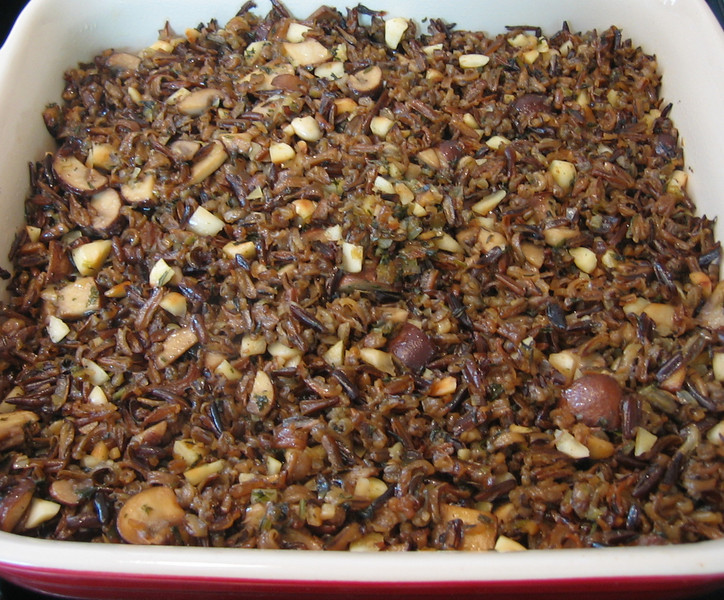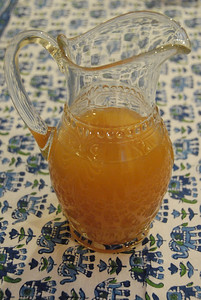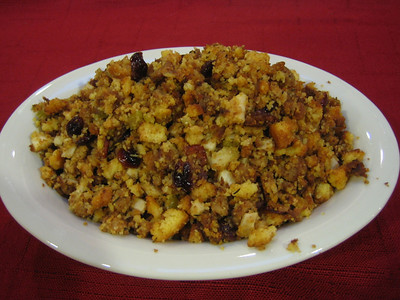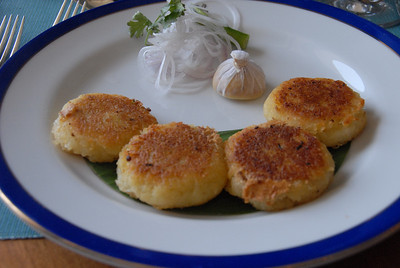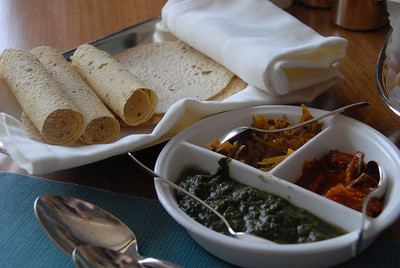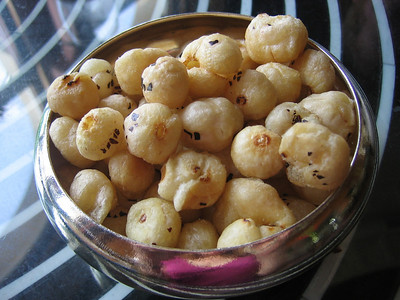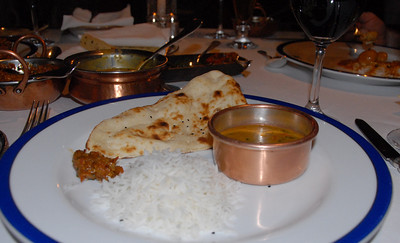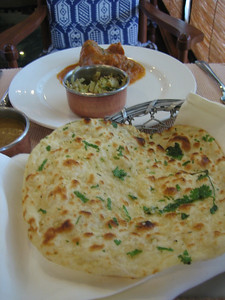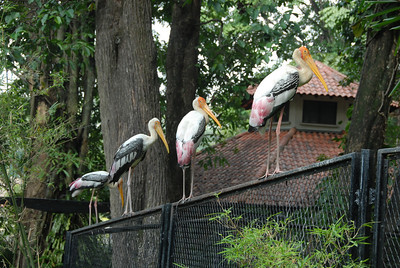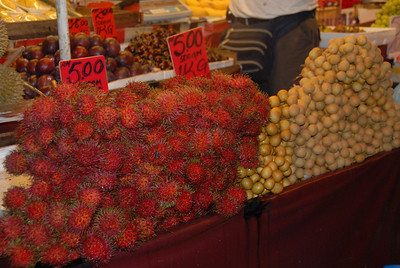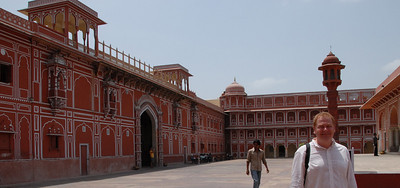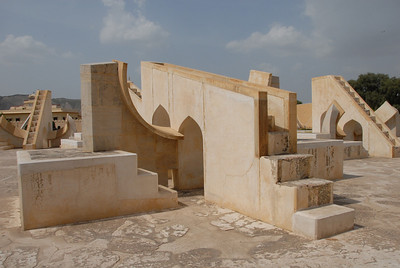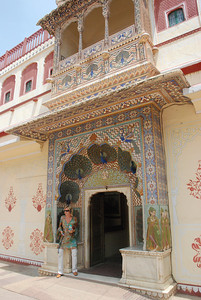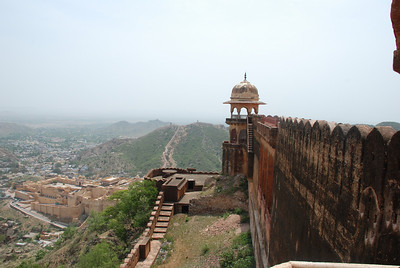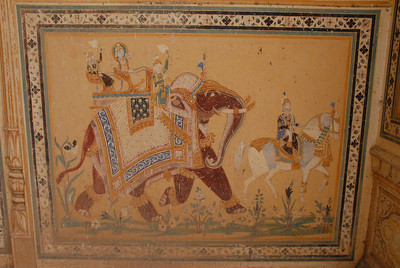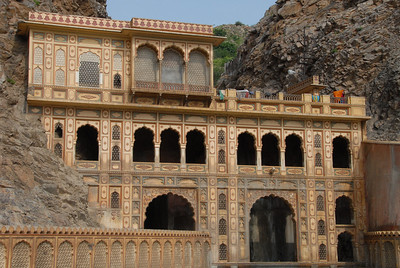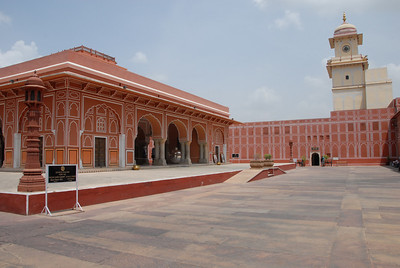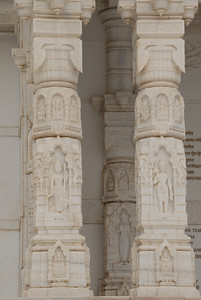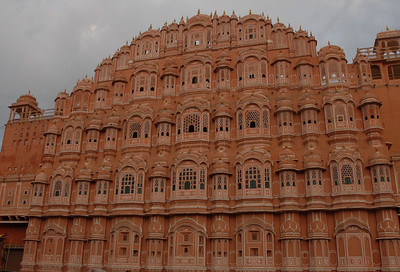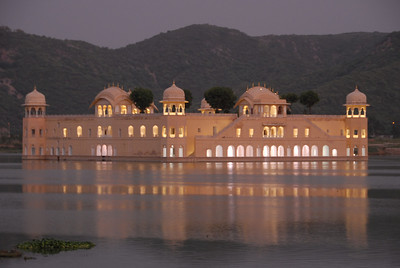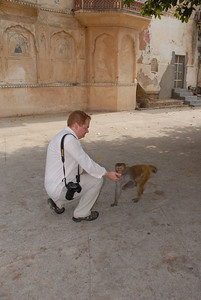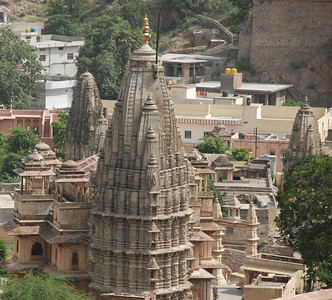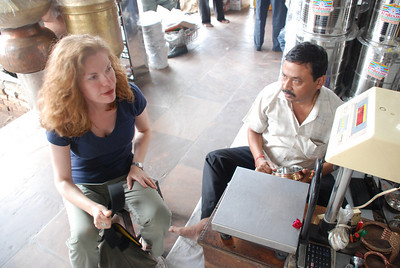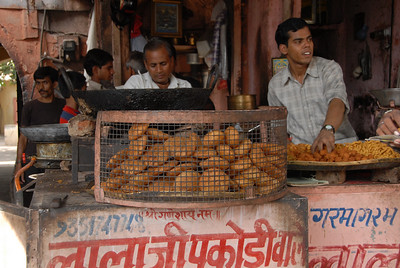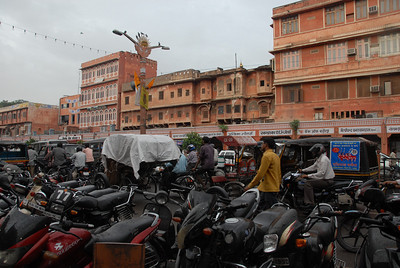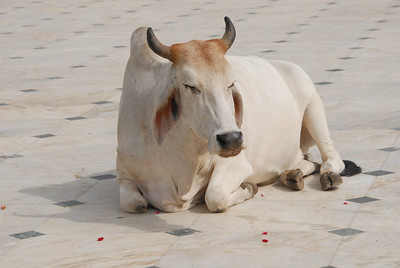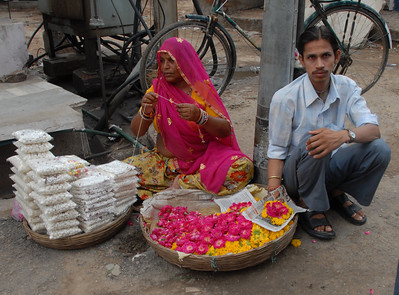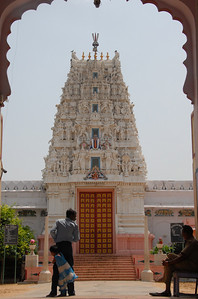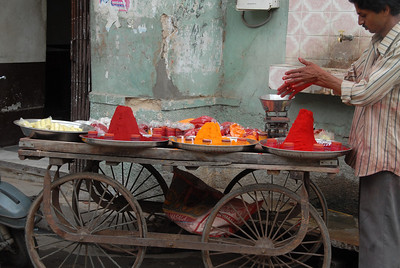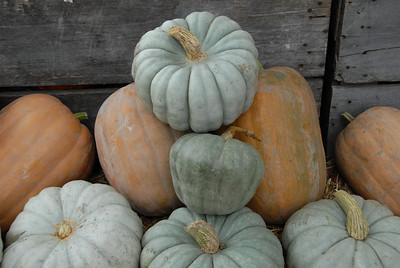
Pity the pumpkin. Each fall it risks getting carved up, stuffed with a candle and dumped unceremoniously on someone’s porch only to be forsaken after Halloween. When this thick-skinned winter squash does make it to the dinner table, it’s relegated to the end of the meal, to a time when most diners are too satiated to indulge in or even appreciate its rich, earthy taste.
I, too, once had little regard for the poor pumpkin. It was neither a seasonal decoration nor a fragile cannonball but the main ingredient in my mother’s Thanksgiving pies or aunt’s sweet pumpkin squares and breads. Spiced with ginger, cinnamon and nutmeg, it concluded the holiday dinner then quickly disappeared from our menus, replaced by cranberry cobblers, mince pies and fruitcakes. Now, though, the low-fat and low-calorie pumpkin sticks around long past Thanksgiving, playing a starring role in both my dinners and desserts.
Much of the world uses pumpkin in savory as well as sweet dishes. The French use it in soups and in bread, pain de courge, which is consumed at breakfast or as a snack. For breakfast, Cypriots may choose kolokotes, a small pie resembling a Cornish pasty, filled with chopped pumpkin and golden raisins. Caribbean cooks pair it with chilies and legumes and use it in hearty, fragrant stews. Moroccans dine on couscous dotted with chunks of pumpkin, and Turks end their dinners with bowls of pumpkin poached in a simple syrup and topped with pistachios or walnuts.
A part of the gourd family, which also claims cucumbers and melons as members, the pumpkin hails from the Americas. Sensitive to cold in spite of its tough skin, it requires temperate weather, regular watering and lots of space to flourish.
What to do once a hefty, blemish-free pumpkin had been bought from a local farm stand or plucked from my parents’ garden used to baffle me. Cleaning and chopping this unwieldy ball seemed fairly daunting. Trying to figure out the required quantities – whole pumpkin vs. trimmed, raw vs. cooked, fresh vs. canned – left me stymied. No wonder everyone in my family stuck with dessert recipes calling for canned pumpkin and zero carving.
After consulting my stained and dog-eared copy of Joy of Cooking (Scribner, 1997), I gained some courage. According to Rombauer, Rombauer Becker and Becker, one pound of pumpkin provides 13 ounces of trimmed meat. Cooks, they indicated, should allot 8 to 12 ounces of untrimmed pumpkin per serving.
Once I figured out serving amounts, the preparation options seemed limitless. I could poach pieces of pumpkin in a sweet liquid, boil them in a soup or stew, turn them into an aromatic curry or bake them, alone or with other winter vegetables, in a gratin or casserole. If feeling ambitious, I could preserve and can pumpkin butter, chutney, jam or relish or even churn some ice cream.
When wishing to defy culinary custom, I could grate it over a salad and serve it raw. If all other choices left me unmoved, I could always fall back on family tradition and bake a pie, bread or square. With so many preparation options available, I suspect that more cooks will soon see just how great a pumpkin can be.
PUMPKIN GRATIN
5 tablespoons unsalted butter
1 large white onion, diced
2 pounds pumpkin, washed, seeded, peeled and cut into small cubes
1½ teaspoons dried thyme
1½ teaspoons salt
1 teaspoon freshly ground black pepper
1 tablespoon flour
¼ teaspoon freshly grated nutmeg
1 cup milk
2 tablespoons heavy cream
½ cup grated Gruyere cheese
Pre-heat the oven to 375 degrees.
Using one tablespoon of butter, grease the gratin dish then set it aside.
Melt the remaining four tablespoons of butter in a large saute pan or Dutch oven. Add the onions, pumpkin, thyme, salt and pepper. Toss the ingredients together, then cover and cook on medium to medium low for about 40 minutes, stirring periodically.
Add the flour and nutmeg and stir to coat the ingredients.
Stirring continuously, slowly pour in the milk. Reduce the heat to low and simmer uncovered for 15 minutes, stirring as needed. A sauce of medium consistency should form.
Add the cream, and stir then tumble the mixture into the buttered gratin dish. Sprinkle the Gruyere cheese over the top then put in the oven and bake for 30 minutes or until the cheese has become golden brown. Makes 6 servings.
PUMPKIN SQUARES
Recipe courtesy of Martha Hunt
For pumpkin squares:
2 cups all purpose flour
½ teaspoon salt
2 teaspoons baking soda
3 teaspoons baking powder
1 teaspoon cinnamon
½ teaspoon nutmeg
½ teaspoon ground cloves
2 cups granulated sugar
1¼ cups vegetable shortening
2 cups pure pumpkin
4 eggs
1 teaspoon vanilla
1 cup roughly chopped walnuts
For icing:
1 8 ounce package of cream cheese, softened
1 stick plus 2 tablespoons margarine, at room temperature
½ teaspoon vanilla
3 cups powdered sugar, sifted
Chopped walnuts, optional
Preheat the oven to 350 degrees.
Grease and flour the bottom and sides of a jelly-roll pan then set aside.
Place the flour, salt, baking soda, baking powder, cinnamon, nutmeg and cloves in a medium-size bowl and stir to combine.
Put the sugar and shortening in a large bowl. Using an electric mixer, beat the two together until smooth. Scrape down the bowl and intermittently add the pumpkin and eggs. Beat until well combined.
Slowly add the flour mixture to the pumpkin mix, scraping down the sides of the bowl after each addition. Beat until fluffy and well mixed.
Add the vanilla and chopped walnuts and combine.
Spoon and evenly spread the batter into the prepared jelly-roll pan. Place the pan in the preheated oven. Bake for 30 minutes. When finished, a toothpick inserted in the center will come out crumb-free.
Set the pan on a cooling rack and allow to cool 2 to 3 hours before frosting.
Place the softened cream cheese and margarine in a large bowl. Using an electric mixer, cream the two together until smooth. Add the vanilla and beat until incorporated. Add the powdered sugar 1 cup at a time, beating until well combined and scraping down the sides of the bowl with each addition.
Using an icing spatula, spread the cream cheese frosting over the pumpkin cake. If desired, sprinkle chopped walnuts over the icing. For 30 generously sized “squares” (they will more closely resemble rectangles), slice 5 horizontal rows with 6 individual “squares” in each row. Refrigerate until ready to serve.
Makes about 30 pieces.
